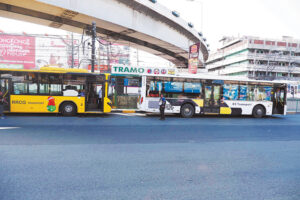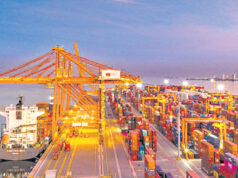Plans towards improved transport

Transport is widely seen as a fundamental driver of the economy as it significantly impacts the everyday lives of people. Such systems provide access to goods and opportunities, both for people and businesses, in various locations. Thus, on one hand, substandard transport systems could affect economic activities and people’s lives.
The Philippines’ transport system is notorious for the struggles with time-consuming traffic and commutes as well as in international airports.
Having the role to maintain and expand the transport system in the Philippines, the Department of Transportation (DoTr) is seeking to provide a “fast, reliable, safe, affordable, comfortable, and accessible transportation system across the country” by recognizing the need to carry out projects, programs, and initiatives centered on transport infrastructure. As such, under the new government administration, what then are the infrastructure plans that have been mapped out to provide an improved transportation system in the country?
In his first State of the Nation Address (SoNA) on July 25, President Ferdinand “Bongbong” R. Marcos, Jr. said that the previous administration’s flagship infrastructure program Build, Build, Build would be continued, as well as the current administration’s commitment to finish the development of railway projects and the continuation of roads and transportation systems improvement.
“The infrastructure program of the Duterte administration must not only continue but, wherever possible, be expanded. We shall confidently build on this firm foundation established by my predecessor. As it is in building an edifice. We must keep the momentum. And aspire to ‘Build Better More,’” he said.
In expanding the infrastructure projects, the President said the private sector’s participation could help make it possible, adding that public-private partnerships (PPPs) have “great potential” for infrastructure development expansion and for innovation.
President Marcos also believed that “some great opportunities” have been missed in the development of the rail transport system.
“It is clear in my mind that railways offer great potential as it continues to be the cheapest way of transporting goods and passengers. We can build upon already existing lines by modernizing these old railway systems,” he said.
“There are dozens of railway projects — on the ground, above the ground, below ground, not just in Manila, but in other regions — at various stages of implementation, and with a combined cost of P1.9 trillion,” he added.
The administration is thus committed to finishing approved railway projects, including the North-South Commuter Railway System, Metro Manila Subway Project, North-South Commuter Railway System, LRT-1 Cavite Extension, MRT-7, and the Common Station.
Furthermore, larger-scale railway systems outside Metro Manila, which include the Mindanao Railway Project, Panay Railway Project, and Cebu Railway System, would be “integrated as a vital part of our transport and communications systems,” he added.
Mr. Marcos also said that the improvement of roads and transportation systems in key cities would carry on. Among these projects are the Cebu Bus Rapid Transit, Davao High Priority Bus System, Ilocos Norte Transportation Hub, and El Nido Transport Terminal.
“My order to the Department of Transportation or DoTr is really very simple: full speed ahead!” the President said.
“Improving our railway system, along with modernizing existing airports and seaports, will maximize our strategic location in the Pacific. And connect our many islands,” he added.
Additionally, one of the near-term goals in the Marcos administration’s eight-point socioeconomic agenda is to “protect purchasing power and mitigate socioeconomic scarring.” And this would involve, among others, reducing transport and logistics costs.
For the reduction of such costs, according to the Department of Budget and Management, P976.5 billion should be allocated to improve transportation through the administration’s ‘Build, Better, More’ program. The Department of Public Works and Highways (DPWH) would receive P894.2 billion, while P82.3 billion for the DoTr.

Meanwhile, in the Philippine Development Plan (PDP) 2023-2028, the country’s transportation system improvement and expansion are embodied to make it “safe, convenient, accessible, modern, and efficient,” according to the DoTr.
The department said in a statement that among the strategies that the plan would implement is active transport infrastructure development like segregated lanes, bike-only roads, shade trees, showers, widened sidewalks, and at-grade pedestrian crossings.
There is also a focus on the establishment of mass transportation systems, which include railways, bus rapid transit, and ferries, while also involving high levels of service, universal accessibility, gender inclusivity, sustainability, seamless intermodal transfers, last mile connectivity, and an interoperable national automated fare collection system.
Also among the strategies, according to the DoTr, is the strengthening of the nautical highway. This would involve the expansion of seaports to have the capacity for more and larger roll-on/roll-off vessels, as well as the development of logistics infrastructure like cold chain facilities to support agriculture and trade. The upgrade of existing airports and the creation of new ones, which would be focusing on safety, levels of service, promotion of tourism, and future-proofing, are also sought.
The PDP 2023-2028, approved last month by the National Economic and Development Authority Board, is the country’s blueprint for development planning for the said years.
Last month, the DoTr also conducted a two-day department-wide strategic planning workshop, aiming to come up with a six-year national transport plan. — Chelsey Keith P. Ignacio



